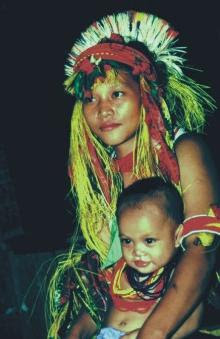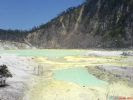Coffee Lifecycle
by: Rogers Estate Coffees
There are two basic types of coffee trees: Arabicas and Robustas. Robustas are hardy, high-yielding trees that grow at lower elevations in the tropics. They yield low-quality coffee with a harsh astringent taste, so Robustas are generally blended with other coffees to mask their poor flavor. Most gourmet coffee roasters will not buy Robustas.
Arabicas, however, are delicate trees that yield top-quality coffee. They are grown in high elevations, usually above 3,000 feet, in partly cloudy or shady climates, where the coffee cherry develops slowly. The ripe, red cherry of Arabica trees are harvested by hand, so only the ripest, highest quality beans are processed. Indeed, since coffee trees have cherries that are in various stages of development, this is the only way to insure consistency and quality.
After harvesting, the coffee beans (actually the seeds of the cherry) are processed to remove them from the cherries. They are then sorted both by machine and by hand. This sorting process removes imperfections and separates the beans into grades. For example, in Colombia, the top 3 grades are Supremo, Excelso, and Milds.
Unroasted but processed coffee is called “green coffee,” and it is in this form that the coffee is exported from the origin countries in 60 or 70 pound burlap bags. Green coffee beans can be stored for about a year before losing the top end flavors. When the coffee is roasted, its lifespan will decrease especially when exposed to air. This is why the roaster must be close to the consumer and package the coffee as quickly as possible.
There are two basic types of coffee trees: Arabicas and Robustas. Robustas are hardy, high-yielding trees that grow at lower elevations in the tropics. They yield low-quality coffee with a harsh astringent taste, so Robustas are generally blended with other coffees to mask their poor flavor. Most gourmet coffee roasters will not buy Robustas.
Arabicas, however, are delicate trees that yield top-quality coffee. They are grown in high elevations, usually above 3,000 feet, in partly cloudy or shady climates, where the coffee cherry develops slowly. The ripe, red cherry of Arabica trees are harvested by hand, so only the ripest, highest quality beans are processed. Indeed, since coffee trees have cherries that are in various stages of development, this is the only way to insure consistency and quality.
After harvesting, the coffee beans (actually the seeds of the cherry) are processed to remove them from the cherries. They are then sorted both by machine and by hand. This sorting process removes imperfections and separates the beans into grades. For example, in Colombia, the top 3 grades are Supremo, Excelso, and Milds.
Unroasted but processed coffee is called “green coffee,” and it is in this form that the coffee is exported from the origin countries in 60 or 70 pound burlap bags. Green coffee beans can be stored for about a year before losing the top end flavors. When the coffee is roasted, its lifespan will decrease especially when exposed to air. This is why the roaster must be close to the consumer and package the coffee as quickly as possible.


Comments
Post a Comment